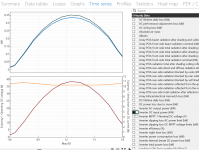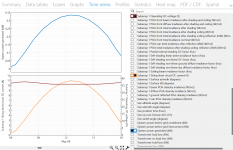I.e. if the sun's location is denoted by a vector S on the unit hemisphere, and the module's normal vector is N, then computing S dot N, which will be the cosine of the angle formed by S and N.
In the northern hemisphere, if the panel's azimuth is 180 degrees and tilt angle is T, then the best case for irradiance is when the sun's azimuth is also 180. At latitude L, the sun's tilt at solar noon will between L-23.5 degrees (the earth's tilt) to L + 23.5 degrees over the course of the year. So if T is in that range, the highest irradiance is achieved, the sun does pass directly normal to the panel. Otherwise, the best case will give a factor cos (L-T-23.5) on the summer solstice.
When the panel azimuth is not 180 degrees, the above needs to be corrected, as the sun will be lower in the sky when its azimuth matches the panel azimuth than it is at solar noon. One could look more closely at the sun equation of time to figure out the correction.
However, PVWatts, and presumably SAM, compute the panel irradiance as not just the direct (beam?) irradiance, but also add a component for diffuse irradiance. I'm not sure how that's computed. So extracting the irradiance data from one of those programs is probably simpler and more accurate.
BTW, I did a quick PVWatts run for my location and 10 degree tilt, 210 degree azimuth and then briefly looked at the panel irradiance data. The highest value was over 1000 W/m^2, maybe it was 1050 W/m^2? One more reason for the 125% factor in 690.8(A)(1)(a)(2), the short circuit current may exceed STC conditions (saying whether it actually did would also require a model for cell temperature and effects on Isc).
Cheers, Wayne




